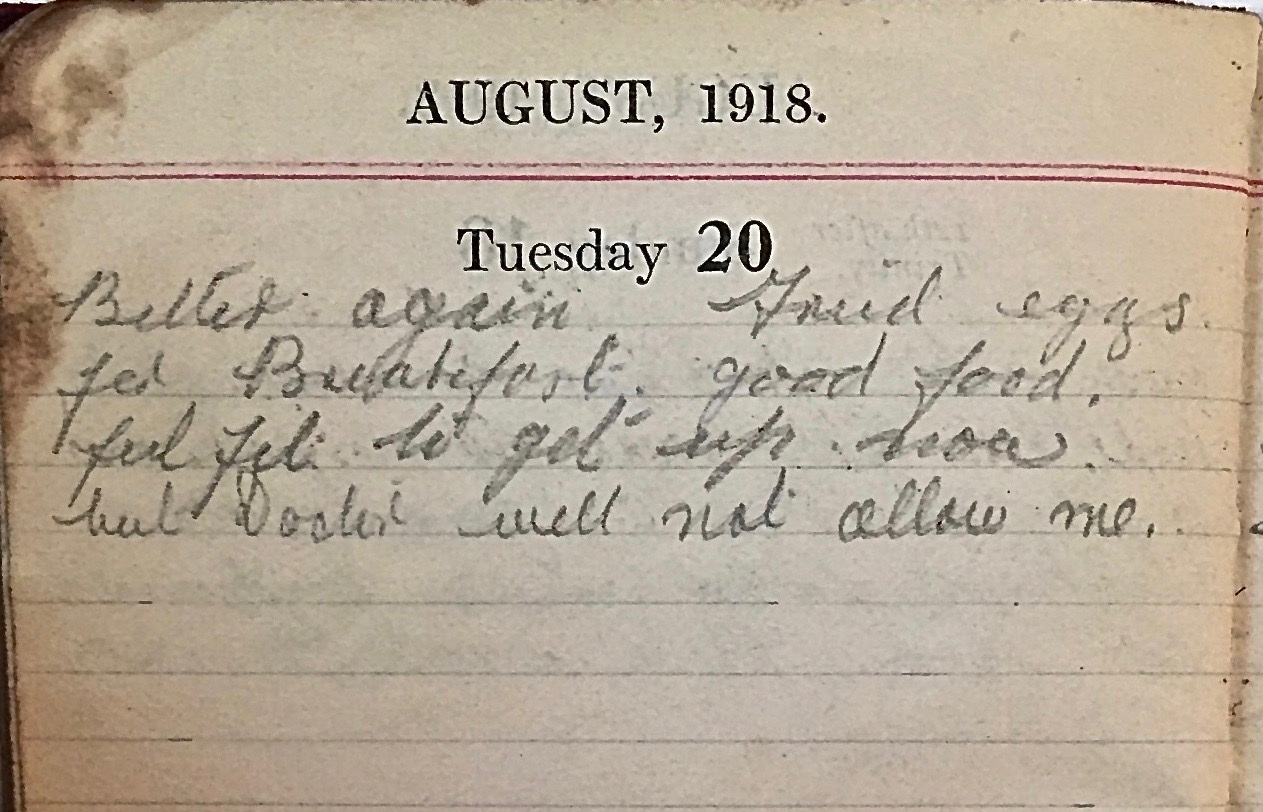Tuesday August 20th, 1918
Better again. Fried eggs for breakfast. Good food. Feel fit to get up now but Doctor will not allow me.
The Royal Army Medical Corps (RAMC)
Medical staff had supported British armies since the time of Charles II, with the establishment of Regimental Surgeons. The RAMC, after much petitioning by the medical profession, was created in 1898. It was established because, by then, army medical personnel felt they were second class citizens – treated like officers, but not officers.
During WWI, the RAMC came into its own and is credited with healing and returning to the line over one and a half million wounded troops.¹
The RAMC in WWI
The sheer scale of the RAMC’s operation is described by Sir William G Macpherson, in the preamble to one of his volumes on the ‘History of the Great War Medical Services’:

‘Including labour units provision had to be made at one time or another for the medical services of forces with a total strength of nearly 3,500,000, operating in every variety of country and climate. A total maximum of 637,746 hospital beds were equipped and maintained in the United Kingdom and in theatres of war.
Approximately 770 medical units of all descriptions were mobilized in the United Kingdom and despatched to expeditionary forces. In addition, 75 hospital ships or ambulance transports were equipped and administered by medical services in the United Kingdom, and 2,655,025 sick and wounded were brought to its shores for further treatment and disposal between August, 1914, and August, 1920.
The personnel for medical services numbered at the time of the Armistice 144,514 officers and other ranks, most of whom joined the R.A.M.C. and were trained in the United Kingdom. Vast quantities of medical and surgical stores and equipment were procured, packed, and despatched. The medical services in the United Kingdom were thus a predominant and essential factor in the work of the war.’²
The image shows a surgeon at work at a dressing station near Le Quesnel, on August 11th, 1918 during the Battle of Amiens.
It is in the care of such doctors, that Frank is now recovering his health, and enjoying the food.
9th Battalion / Manchester Regiment War Diary – 20th August 1918 – Haudricourt
Training and work as per programme. Programme of Training and Work for 21st & 22nd inst issued (Appendix No 6).
References & Further Reading
¹ RACM: Royal Army Medical Corps, WWI
² History of the Great War Medical Services, General History, Volume 1, Sir William G Macpherson, 1921, HMSO
^ Q 6936, copyright Imperial War Museums http://www.iwm.org.uk/collections/item/object/205213232


